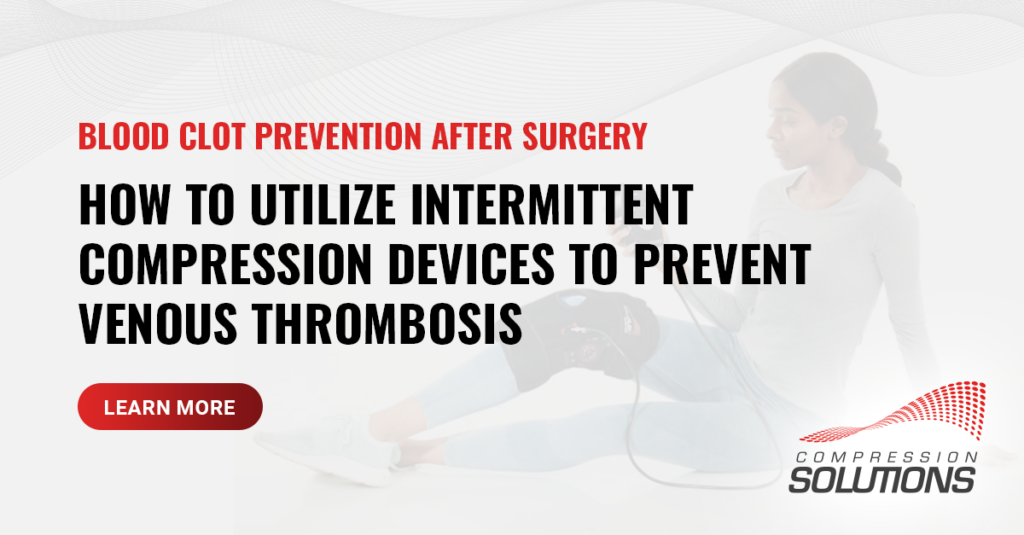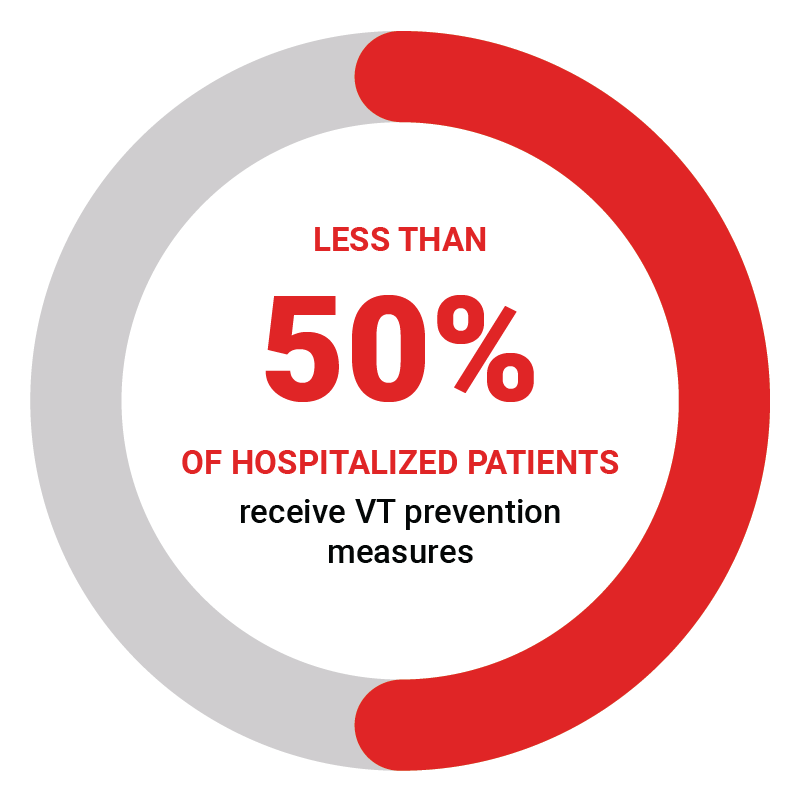
How to Utilize Intermittent Compression Devices to Prevent Venous Thrombosis
In the United States, there are more than 1 million total joint arthroplasty surgeries performed each year. That number is growing, and is expected to reach 4 million by 2030. Total joint surgeries have become routine, and many of these surgeries are now outpatient.
Like most medical procedures, routine doesn’t mean these surgeries are risk free. Any type of alterations to a patient’s physiology means there is a margin for risk exposure. Joint replacement surgeries involve risks such as:
- Blood loss
- Anesthesia side effects
- Pain
- Infection
- Blood clots in various forms
Various Forms of Blood Clots
Saying that a patient is at risk for a blood clot could mean a variety of different things. A blood clot is a gelatinous mass of fibrin and blood cells that is created by the coagulation of blood as a result of the body trying to naturally stop bleeding. After surgery, blood clots are formed after blood loss and the body is not circulating blood due to lack of movement.
Blood clots after surgery can develop into deep vein thrombosis (DVT), a pulmonary embolism (PE), or venomous thrombosis (VT.) Each of these diagnoses are ways that blood clots present themselves in a deadly way.
DVT– Deep vein thrombosis is when a blood clot is formed in the deep veins stopping blood flow.
PE– A pulmonary embolism happens when a blood clot travels through the bloodstream to the lungs and disrupts blood flow. If left untreated, there is a 30% death. However, about 10% of individuals with a PE die immediately.
Learn more about pulmonary embolism here.
VT– Venous thrombosis is a general diagnosis referring to blog clots in the veins and includes DVT and PE.
Causes of Venous Thrombosis
Someone is most at risk for a VT following surgery or during periods of infection or inflammation. Lack of movement also plays a major role in the development of dangerous blood clots. There are several factors such as age, weight, and previous conditions that could make someone more at risk for venomous thrombosis. Some people are also genetically at-risk for blood clot related illnesses.
VT is not a new diagnosis. But, it is persistent and completely preventable. More than 540,000 hospitalized patients develop VTE annually. More than half of those cases are diagnosed within three months of hospitalization.

There are several preventative measures for VT, yet it is one of the leading causes of avoidable hospital deaths. While preventable and somewhat common, fewer than 50% of hospitalized patients receive VT prevention measures.
Blood clots can be prevented with anticoagulant medication or intermittent compression devices.
The role of Intermittent Compression Devices to Prevent Blood Clots
Intermittent Compression Devices, or ICDs, fit snug around the calf and fill with air, squeezing the legs to increase blood flow. The compression aspect of ICDs help bring oxygen to the blood stream allowing blood to flow in its natural state.
Deep vein thrombosis starts with a blood clot in a patient’s deep veins within their legs. Deep veins have the responsibility of moving blood back toward the heart- which is how DVTs are deadly. Because post-surgical patients aren’t walking as much as normal, blood can become blocked and pool together- causing the clot.
Symptoms include swelling, pain, and tenderness in the leg.
There are a variety of intermittent compression devices on the market. The PlasmaFlow is made for patients who have been discharged from a surgery center. These are great for patients who are more active as there are not any cords or cables.
However, Compression Solutions offers the Triple Play which is a DVT prevention cuff that can be used in conjunction with ice packs allowing for cold therapy with compression. This can be used in a clinical or at-home setting.
How to Use an Intermittent Compression Device
For patients using a compression device, make sure the entire cuff is enclosed around the leg. The device should feel like a blood pressure cuff- filling with air and squeezing the leg, before deflating.
Here are some common questions from those utilizing intermittent compression devices.
